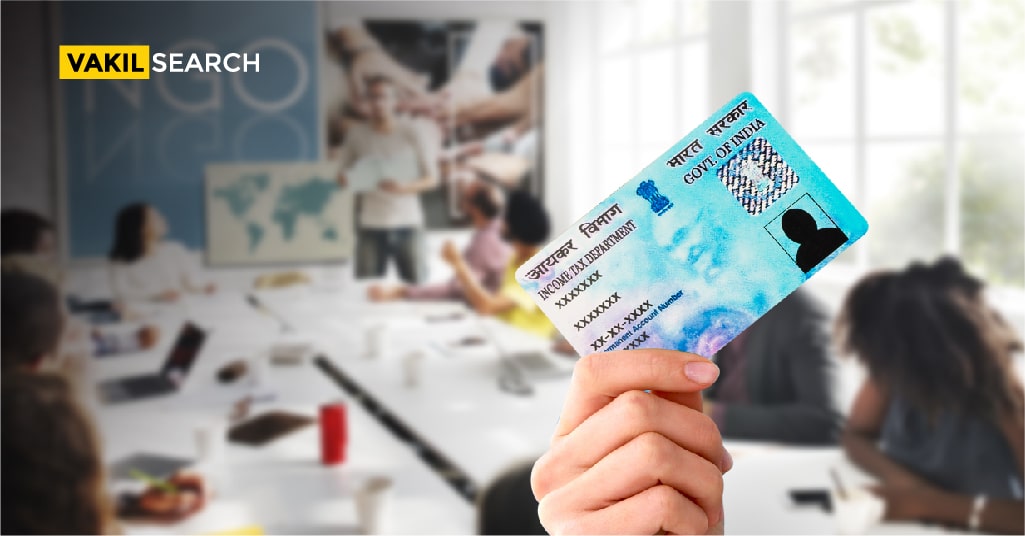The government of India has made it mandatory to provide PAN card details when filing the House Rent Allowance claims. These returns which are necessary if the annual rent paid exceeds INT 1,00,000 will now need a PAN card. The Income Tax Department issued a circular through the Central Board of Direct Taxes indicating this new requirement. All tenants must now quote their landlord’s PAN card to claim tax exemption. In case you don’t have a PAN card, you must apply for it at the earliest since it is necessary to have a PAN card for HRA exemption.
PAN Card For HRA Exemption: During this article, we will be taking a closer look at the steps involved in filing HRA exemptions, as well as the need for the PAN number to complete the process.
What is the House Rent Allowance?
The House Rent Allowance, also known as the HRA, is part of the salary that employees receive for their rented accommodation. Hence, such an HRA exemption can only be availed only if the employee resides in a rented flat or home. As per Section 10(13A) of the Income Tax Act, subject to various conditions, a part of the HRA can be claimed as an exemption. However, in case the employee lives in their home or does not pay rent, the entire HRA received is taxable.
Since the HRA differs as per the location, the percentage allotted to employees also changes. Employees working for private companies in metros receive an HRA of 50%, while those in non-metros receive 40%. When it comes to public sector undertakings, the exemption depends upon the minimum and maximum prescribed HRA as per the 7th Pay Commission’s recommendations.
Who All Can Avail of the House Rent Allowance?
Tax benefits may be claimed only by salaried employees who are given an HRA as a part of their salary structure on joining. Also, the individual must reside in a rented flat or home to avail of such a benefit. In case they live in their apartment, the entire HRA allowance will be deemed taxable. Similarly, the HRA of self-employed professionals is fully taxable, and they cannot claim tax exemptions or benefits. Also, the HRA exemption is separate from an exemption on home loan interests, and hence eligible individuals can claim both. The documents required to file an HRA exemption are as follows:
- Rent Agreement
- Duly authorized rent receipt
- PAN card of the landlord
In case the landlord does not have a PAN card, the individual may still claim an HRA exemption. However, in such cases, they will have to provide proof regarding the payment of rent at the time of filing their taxes. The IT department will then cross-check this with the reports filed by the individual’s employer and landlord. In case of any discrepancy, the individual will have to provide a record of all rent receipts received and the legally valid rental agreement.
How Does the Government Enforce the New HRA Law?
As per the new law, all employees who pay out more than ₹ 1,00,000 as rent in a year must submit their PAN details if they wish to claim tax deductions. The individual must submit a PAN Declaration form along with the details of their landlord’s PAN and a tax exemption claim form. The PAN card for HRA exemption declaration must be printed on an A4 size sheet and must include the following information:
- Undertaking by the landlord
- Property/Residence Address
- Amount paid as rent
- Landlord’s details, including PAN card number, name, and address
- Landlord’s signature
Can We Claim HRA When Living With Parents?
Since the rental income received by parents is taxable, individuals must consider their income tax slabs to decide whether to claim HRA. Since any discrepancies can lead to hefty penalties, fines, and legal repercussions, it is best to consult a legal expert before making a decision. When trying to claim HRA benefits when living with parents, individuals should consider the following:
- The individual must be living in rented accommodation.
- The individual’s parents must own the house or flat.
- To save tax, the individual must pay rent to the property’s owner, and in case of joint ownership, the individual must pay the rent to both parents.
- Both parties must enter into a legal rental agreement, which is concise and clear.
- The individual must collect rent receipts from their parents to ensure they file their tax returns appropriately and accurately.
Also, the parent must ensure they declare the rent received as their rental income while filing their IT returns.
How is the HRA Calculated?
HRA calculation follows the method which provides the lowest sum of the three conditions given below;
- HRA amount received by the employer
- Actual rent amount minus 10% of the employee’s basic salary
- 50% HRA (on basic salary) in metro cities and 40% for non-metros
The least value among the three will be considered the employee’s HRA tax exemption. Let us now consider the following case to understand the calculation better. Suppose you live in Delhi and earn a monthly salary of ₹ 50,000. The company’s HRA is ₹ 25,000, and your rent amounts to ₹ 12,000. In this case, let us calculate HRA by all three methods listed above;
HRA received = 50,000 * 12 = ₹ 6,00,000
Rent paid – 10% salary = 12,000 * 12 – [ {50,000 * 12} *0.1] = ₹ 84,000
50% of basic salary = [{50,000 * 12} *0.5] = ₹ 3,00,000
As you can see, the least of the three is ₹ 84,000, and hence this is the tax exemption you will receive.
Conclusion
According to all of the information that has been provided so far, you may be able to find the information you are seeking. We will be happy to work with you if you need any further assistance, so please do not hesitate to contact us if necessary.
Read more,










